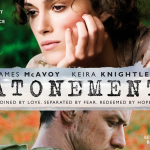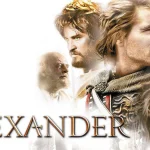Enter the Dragon (1973)

Released in 1973, Enter the Dragon is a seminal martial arts film directed by Robert Clouse and written by Michael Allin. Starring the legendary Bruce Lee, alongside John Saxon, Ahna Capri, Bob Wall, Shih Kien, and Jim Kelly, the film is often credited with bringing martial arts to a global audience and remains a cornerstone of the genre. Its blend of action, philosophy, and cultural themes not only showcases Lee’s incredible fighting skills but also establishes the framework for future martial arts films.
The plot centers around Lee (Bruce Lee), a martial artist recruited by an intelligence agency to infiltrate a clandestine fighting tournament hosted by the enigmatic Han (Shih Kien) on his private island. Lee’s mission is to gather evidence of Han’s drug trafficking operations, while simultaneously seeking vengeance for the death of his sister, who fell victim to Han’s criminal activities. This dual motivation adds depth to Lee’s character, transforming him from a mere fighter into a man driven by personal and moral codes.
One of the film’s most significant aspects is its portrayal of martial arts as both an art form and a means of self-discipline. Bruce Lee’s character embodies the philosophy of martial arts, emphasizing not just physical prowess but also mental and spiritual growth. The film opens with a series of scenes that highlight Lee’s training and principles, setting the stage for the battles to come. His teachings and values resonate with audiences, showcasing martial arts as a path toward self-discovery and enlightenment rather than mere violence.
The fight choreography in Enter the Dragon is groundbreaking, thanks to Bruce Lee’s innovative techniques and his emphasis on realism. Lee’s speed, agility, and precision are showcased in meticulously choreographed fight sequences that remain iconic in cinema history. The film features a variety of fighting styles, blending traditional martial arts with street fighting, demonstrating Lee’s versatility and the broader scope of martial arts practices. The famous confrontation in the mirrored hall is a particularly memorable scene, creating a visual spectacle that enhances the tension and excitement of the battle.

Moreover, Enter the Dragon was groundbreaking in its representation of Asian culture and martial arts in Western cinema. At a time when Hollywood often relied on stereotypes, Bruce Lee’s portrayal of a complex, multi-dimensional character challenged prevailing narratives. Lee was not just a fighter; he was an intelligent, philosophical protagonist who represented the strength and resilience of Asian culture. His performance transcended the genre, allowing audiences to appreciate the artistry of martial arts while also engaging with the underlying themes of honor, justice, and revenge.

The film also features a diverse cast, with John Saxon and Jim Kelly bringing additional depth to the story. Saxon plays Roper, a charming yet skilled fighter who adds a layer of complexity to the narrative, while Kelly portrays Williams, an African American fighter who faces his own set of challenges. Their interactions with Lee enrich the film’s themes of camaraderie and the fight against oppression, showcasing the idea that martial arts can unite individuals from different backgrounds in the pursuit of justice.

Enter the Dragon became a cultural phenomenon upon its release, paving the way for future martial arts films and influencing a generation of filmmakers and actors. Bruce Lee’s charisma and talent captivated audiences, making him an international superstar. The film’s success also marked a turning point in the representation of martial arts in Western cinema, leading to an influx of martial arts films in the years that followed.

In conclusion, Enter the Dragon is more than just a martial arts film; it is a cultural landmark that redefined the genre and showcased the profound impact of Bruce Lee on cinema. Robert Clouse’s direction, coupled with Lee’s unparalleled performance, creates a film that is both entertaining and thought-provoking. Through its exploration of martial arts as a path to self-discovery and its challenge to stereotypes, Enter the Dragon continues to resonate with audiences today. Its legacy endures, inspiring countless films and martial artists, and ensuring that Bruce Lee remains an iconic figure in both martial arts and film history.
Suggested videos for you:
Suggested videos for you:











